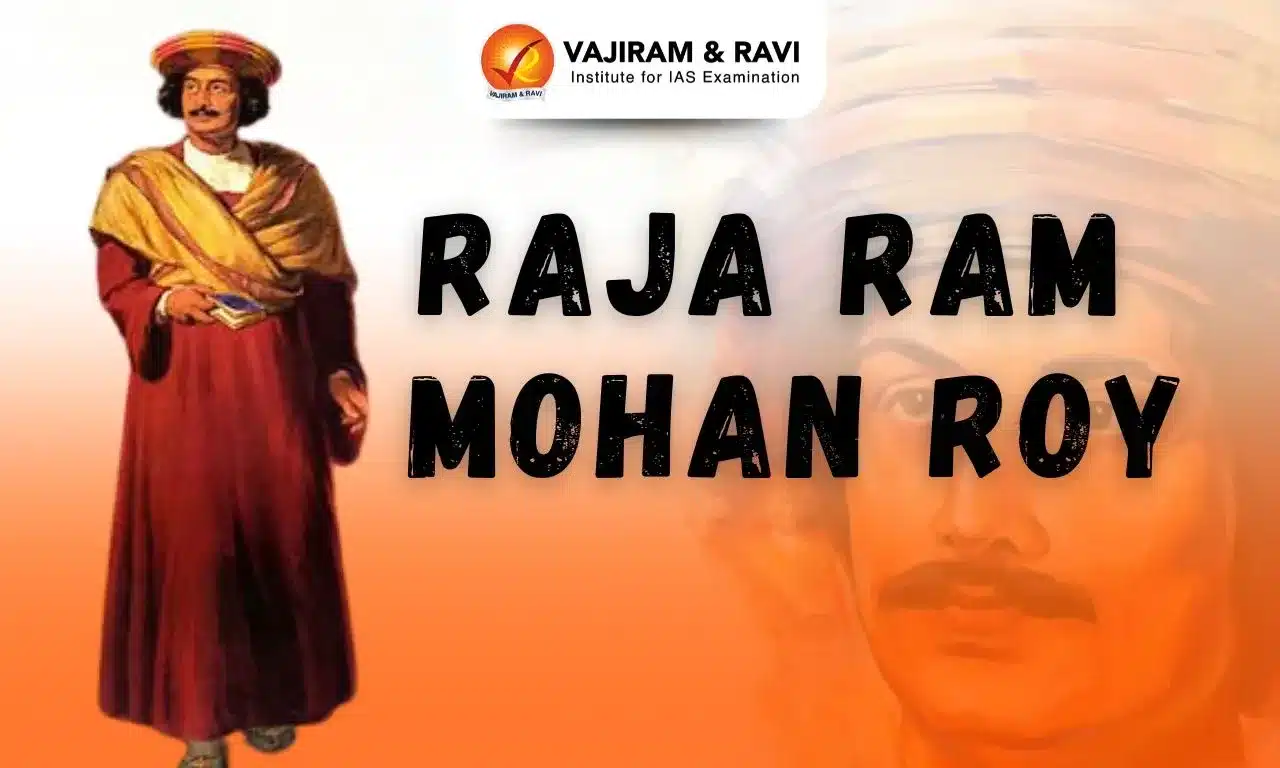Vardhaman Mahavira was the twenty-fourth and last Tirthankara of the current age (kalpa) of the world who has crossed over life’s stream of rebirths and has set the example that all Jainas must follow. According to Jain philosophy, all Tirthankaras were human beings who attained perfection or enlightenment, through meditation and self-realization.
Vardhaman Mahavira Life History
Mahavira was born in 540 B.C. in Kundagram, near Vaishali (modern day Bihar). His birthday is celebrated as Mahavir Jayanti.
- Parents: His mother was Queen Trishala, Kshatriya caste, and his father was King Siddhartha, a ruler of the Nata, or Jnatri, clan. His parents were devotees of the 23rd Tirthankara, Lord Parsvanatha.
- Mahavira belonged to the Ikshvaku dynasty.
- Spouse: His family’s prosperity increased after his birth, so he was given the name Vardhamana-augmenter. He married a princess named Yashoda. They had a daughter.
- Towards Enlightenment: At the age of thirty, he left his family, gave up his worldly possessions, and became a monk in search of a solution to eliminate pain, sorrow, and suffering.
- Mahavir spent the next twelve and a half years in complete silence and meditation, working to overcome his desires, feelings, and attachments. He discarded his clothes and followed extreme austerities, enduring hardships.
- Finally, he attained enlightenment, called kevala gyana in Jainism, after fasting for two-and-a-half days without water in the full glare of the sun and this entitled him to be called the Jina (conqueror).
- Death: He attained nirvana at the age of 72 (527 B.C.) in the town of Pava in modern-day Bihar.
Vardhaman Mahavira Teachings
The ultimate goal of his teaching is to show how to achieve total freedom from the cycle of birth, life, pain, misery, and death and to achieve a permanent blissful state of being. This is also known as liberation or Nirvana.
- Followers of Mahavira: Mahavira organized his followers, into a four-fold order, namely monk (Sadhu), nun (Sadhvi), layman (Shravak), and laywoman (Shravika). This order is known as Jain Sangh.
- Disciples of Mahavira: Mahavira had eleven disciples (called ganadharas), all of whom were Brahmin converts to Jainism. All of them established monastic lineages, but only two-Indrabhuti Gautama and Sudharman, disciples who survived Mahavira-served as the historical Jaina monastic community’s points of origin.
- Agam Sutras: Lord Mahavir’s sermons were orally compiled in Agam Sutras by his immediate disciples. These Agam Sutras were passed down orally to future generations.
- Over time, many Agam Sutras have been lost, and destroyed. About one thousand years later the Agam Sutras were recorded on Tadpatris (leafy paper that was used in those days to preserve records for future reference).
Pancha Mahavratas of Jainism
Jainism has laid down several vows for actual observance and among them, the twelve Vratas or vows are considered very significant both from religious and social point of view.
- Vrata or vow is a (religious) rule (of behavior) observed with determination (for a particular or indefinite period) and it reveals inclination or disposition towards doing good or virtuous acts or deeds.
- The five main vows or vratas, of Jainas are
- Ahimsa: to be free from injury,
- Satya: to be free from falsehood,
- Asteya: to be free from theft,
- Aparigraha: to be free from worldly attachment.
- Brahmacharya: to be free from unchastity,
- Four doctrines were advocated by Parsvanath and the fifth, Bhranmacharya, was added by Mahavira.
- Anuvratas: Laymen, on the other hand, cannot strictly observe the vows and are thus permitted to practice them to the extent that their circumstances allow. When the same vratas or vows are partially observed, they are referred to as ‘Anuvratas,’ which are small or partial vows.
- Seven Supplementary Vows: There are seven Silavratas or supplementary vows in addition to the five main vows or vratas:
- Digvrata: Taking a lifelong vow to limit his worldly activity to fixed points in all directions.
- Desavrata: limit the Digvrata to a limited area.
- Anarthadanda-vrata: Not to commit purposeless sins,
- Samayika: Devote a particular time every day to contemplation of the self for spiritual advancement.
- Poshadhopavasa: fast on four days of the month, namely, the two 8th and the two 14th days of the lunar fortnight.
- Upabhoga-paribhoga-parimana: Taking a vow every day to limit one’s enjoyment of consumable and non-consumable things.
- Atithi-samvibhaga: Take one’s food only after feeding the ascetics, or, in their absence, the pious householders.
Tri-Ratna of Jainism
According to Mahavira, Nirvana or Salvation is the liberation from the bonds of worldly desires. To renounce the world and become an ascetic is a step in that direction. It must be followed by observance of ‘Tri-Ratnas’.
- The Triratna (three gems) of Jainism consists of
- Samyak Darshan: Right faith
- Samyak Gyan: Right knowledge
- Samyak Charitra: Right conduct
Vardhaman Mahavira Philosophies
The first Tirthankara, Rishabhanath, is regarded as the founder of Jainism and Mahavira was the 24th Tirthankara. Mahavira followed the well-established creed of his predecessor, Tirthankar Parshvanath. However, Mahavir reorganized Jainism’s philosophical tenets to correspond to his times.
- The idea of soul and matter: Mahavira believed that soul (jiva) and matter (ajiva) were the two basic existing elements.
- According to him, the soul is in a state of bondage caused by desire accumulated through previous births.
- The liberated soul then becomes “the pure soul.” He believed that all objects, animate and inanimate, had souls.
- He believed that they felt pain or the influence of injury.
- The idea of Moksha: According to Jainism, man is the creator of his own destiny, and he could attain ‘moksha’by pursuing a life of purity, virtue, and renunciation.
- He advocated a life of severe asceticism and extreme penance to attain ‘nirvana’ or the highest spiritual state.
- The idea of God: He believed that the world was not created by any supreme creator. The world functions according to an eternal law of decay and development.
- View on Vedas: He rejected the authority of the Vedas and objected to Vedic rituals and the supremacy of the Brahmanas.
- View on the Varna System: Jainism did not condemn the Varna system but rather attempted to mitigate its negative aspects. According to Mahavira, a person’s birth varna is determined by the sins or virtues committed in the previous birth.
Vardhaman Mahavira UPSC PYQs
Question 1: Which of the following statements is/are applicable to Jain doctrine? (UPSC Prelims 2013)
- The surest way of annihilating Karma is to practice penance.
- Every object, even the smallest particle, has a soul.
- Karma is the bane of the soul and must be ended.
Select the correct answer using the codes given below.
- 1 only
- 2 and 3 only
- 1 and 3 only
- 1, 2 and 3
Answer: (d)
Last updated on May, 2025
→ UPSC Notification 2025 was released on 22nd January 2025.
→ UPSC Prelims Question Paper 2025 and Unofficial Prelims Answer Key 2025 are available now.
→ UPSC Calendar 2026 is released on 15th May, 2025.
→ The UPSC Vacancy 2025 were released 1129, out of which 979 were for UPSC CSE and remaining 150 are for UPSC IFoS.
→ UPSC Mains 2025 will be conducted on 22nd August 2025.
→ UPSC Prelims 2026 will be conducted on 24th May, 2026 & UPSC Mains 2026 will be conducted on 21st August 2026.
→ The UPSC Selection Process is of 3 stages-Prelims, Mains and Interview.
→ UPSC Result 2024 is released with latest UPSC Marksheet 2024. Check Now!
→ UPSC Toppers List 2024 is released now. Shakti Dubey is UPSC AIR 1 2024 Topper.
→ Also check Best IAS Coaching in Delhi
Vardhaman Mahavira FAQs
Q1. Who was Vardhaman Mahavira?+
Q2. What are the views of Mahavira on God?+
Q3. What are the objectives of the teachings of Mahavira?+
Tags: quest vardhaman mahavira


















